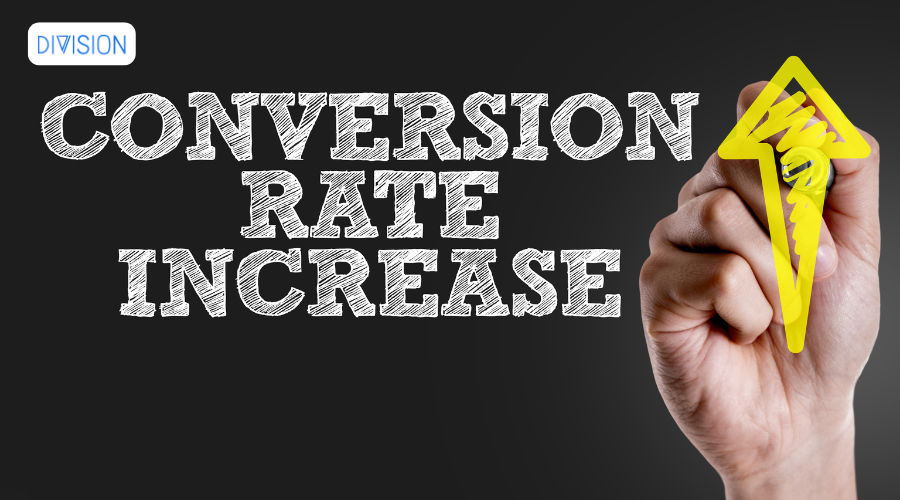When launching a new website, one of the most critical elements to consider is Search Engine Optimization (SEO). Effective SEO strategies can significantly enhance your website’s visibility, attract more organic traffic, and ultimately drive business growth. Here at the Division Web Design, we understand the importance of a robust SEO plan. In this blog, we will outline ten proven strategies to improve your new website’s SEO.
1. Conduct Thorough Keyword Research
Keyword research is the foundation of any successful SEO strategy. Identifying the right keywords helps you understand what your target audience is searching for and enables you to create content that meets their needs.
Brief Points:
- Use SEO Tools: Utilize tools like Google Keyword Planner, Ahrefs, and SEMrush to find relevant keywords.
- Focus on Long-Tail Keywords: These are more specific and often have lower competition, making it easier to rank for them.
- Analyze Competitors: Look at the keywords your competitors are ranking for to find gaps and opportunities in your content strategy.
- Consider Search Intent: Understand the purpose behind the keywords to ensure your content matches what users are looking for.
2. Optimize On-Page Elements
On-page SEO involves optimizing individual web pages to rank higher and earn more relevant traffic. This includes meta titles, meta descriptions, headers, and image alt text.
Brief Points:
- Meta Titles and Descriptions: Ensure your main keyword appears in the title, meta description, and headers. Create compelling and concise meta descriptions that include your main keyword.
- Headers: Use header tags (H1, H2, H3) to structure your content, making it easier for search engines to understand.
- Image Optimization: Use descriptive and keyword-rich alt text for images. Compress images to improve loading speed without compromising quality.
- Internal Linking: Link to other relevant pages on your site to help search engines crawl your site and improve user experience.
3. Create High-Quality Content
Content is king in the SEO world. High-quality, informative, and engaging content attracts visitors and encourages them to stay longer on your site, reducing bounce rates and increasing dwell time.
Brief Points:
- Value-Driven Content: Focus on creating valuable content that answers user queries and provides actionable insights.
- Keyword Integration: Incorporate the main keyword naturally within the content without overstuffing.
- Regular Updates: Update your content regularly to keep it fresh and relevant. This can include adding new information, updating statistics, or refreshing the design.
- Content Formats: Use a mix of content formats like blog posts, infographics, videos, and podcasts to cater to different audience preferences.
4. Improve Website Loading Speed
A fast-loading website enhances user experience and is a critical factor in Google’s ranking algorithm. Slow websites can lead to higher bounce rates and lower rankings.
Brief Points:
- Image Compression: Compress images and use next-gen formats like WebP to reduce load times.
- Browser Caching: Enable browser caching to store static files, reducing the need for repeated downloads.
- Minimize HTTP Requests: Reduce the number of elements on a page that require HTTP requests, such as scripts, images, and CSS files.
- Content Delivery Network (CDN): Use a CDN to serve content from the closest server to the user, improving load times.
5. Mobile Optimization
With the increasing number of mobile users, having a mobile-optimized website is essential. Google uses mobile-first indexing, meaning it predominantly uses the mobile version of the content for indexing and ranking.
Brief Points:
- Responsive Design: Ensure your website is responsive and adapts to different screen sizes and devices.
- Mobile-Friendly Navigation: Use simple, easy-to-use navigation that works well on mobile devices.
- Optimize Media: Optimize images and videos for mobile devices to ensure they load quickly and display correctly.
- Tap Targets: Ensure buttons and links are large enough to be easily tapped on mobile devices.
How to Conduct a Technical SEO Site Audit
6. Build High-Quality Backlinks
Backlinks from authoritative websites signal to search engines that your site is credible and valuable. Building a strong backlink profile can significantly boost your SEO efforts.
Brief Points:
- Reputable Websites: Focus on earning backlinks from reputable websites in your industry to increase your site’s authority.
- Create Shareable Content: Produce high-quality, shareable content that others want to link to.
- Guest Blogging: Engage in guest blogging on relevant sites to build backlinks and increase exposure.
- Outreach Campaigns: Conduct outreach campaigns to build relationships with other website owners and influencers in your niche.
7. Utilize Social Media
Social media platforms can drive traffic to your website and enhance your online presence. While social signals are not a direct ranking factor, they can influence your SEO indirectly.
Brief Points:
- Content Sharing: Share your content on social media platforms to increase visibility and drive traffic.
- Engagement: Engage with your audience by responding to comments and messages, and encouraging social sharing.
- Influencer Relationships: Build relationships with influencers in your industry who can help promote your content.
- Consistent Posting: Maintain a consistent posting schedule to keep your audience engaged and attract new followers.
8. Implement Technical SEO
Technical SEO involves optimizing your website’s backend structure to help search engines crawl and index your site more efficiently. It includes elements like XML sitemaps, robots.txt, and canonical tags.
Brief Points:
- XML Sitemaps: Create and submit an XML sitemap to search engines to help them discover and index your content.
- Robots.txt: Use robots.txt to guide search engine crawlers on which pages to crawl and index.
- Canonical Tags: Implement canonical tags to avoid duplicate content issues and ensure search engines index the preferred version of a page.
- Structured Data: Use structured data (schema markup) to help search engines understand the content and context of your pages better.
9. Monitor and Analyze SEO Performance
Regularly monitoring and analyzing your SEO performance helps you understand what is working and what needs improvement. Use analytics tools to track your progress and adjust your strategies accordingly.
Brief Points:
- Google Analytics: Use Google Analytics to track key metrics like organic traffic, bounce rate, and conversion rate.
- Google Search Console: Use Google Search Console to monitor your site’s performance in search results and identify any issues.
- SEO Tools: Utilize SEO tools like Ahrefs, SEMrush, and Moz to gain deeper insights into your SEO performance.
- Regular Audits: Conduct regular SEO audits to identify and fix any technical issues that could affect your rankings.
10. Stay Updated with SEO Trends
SEO is constantly evolving, and staying updated with the latest trends and algorithm changes is crucial for maintaining and improving your rankings.
Brief Points:
- SEO Blogs: Follow reputable SEO blogs and industry leaders to stay informed about the latest developments.
- Webinars and Conferences: Attend webinars and conferences to learn about new SEO techniques and strategies.
- Continuous Adaptation: Continuously adapt your strategies to align with new updates and algorithm changes.
- Professional Development: Invest in professional development to keep your SEO skills sharp and up-to-date.
How to Optimize Your Website with Advanced Technical SEO Techniques
Essential SEO Tools
| Tool | Purpose | Key Features |
|---|---|---|
| Google Analytics | Performance Tracking | Traffic Analysis, User Behavior |
| Ahrefs | Keyword Research & Backlink Analysis | Comprehensive SEO Analysis |
| SEMrush | Competitor Analysis & Keyword Research | Site Audit, Position Tracking |
| Moz | Keyword Research & SEO Insights | Link Explorer, Rank Tracking |
| Yoast SEO | On-Page SEO Optimization | Content Analysis, SEO Suggestions |
FAQs
Q1: How long does it take to see results from SEO efforts?
A1: SEO is a long-term strategy, and it typically takes 3 to 6 months to see significant results. However, the timeline can vary depending on the competition and the effectiveness of your SEO strategies.
Q2: What is the difference between on-page and off-page SEO?
A2: On-page SEO refers to optimizing individual web pages to rank higher and earn more relevant traffic. Off-page SEO involves activities outside your website, like backlink building.
Q3: Can I do SEO, or do I need to hire a professional?
A3: While basic SEO can be done by yourself, hiring a professional can provide advanced strategies and save time. Professionals have the expertise and tools to implement and manage effective SEO campaigns.
Q4: What are long-tail keywords and why are they important?
A4: Long-tail keywords are more specific keyword phrases that visitors are more likely to use when they’re closer to the point of purchase or when using voice search.
Q5: How does social media impact SEO?
A5: Social media can indirectly impact SEO by driving traffic to your website and increasing the visibility of your content. Engaging content shared on social media can also lead to backlinks from other websites.
Contact Us
For professional web design and SEO services, contact Division Web Design. We are dedicated to helping your business succeed online.
Phone: 732.943.1010
Email: sham@division.design
Incorporating these ten strategies into your SEO plan can greatly enhance your new website’s search engine visibility and overall performance. Remember, SEO is an ongoing process that requires continuous effort and adaptation to stay ahead of the competition. At Division Web Design, we specialize in creating and implementing effective SEO strategies tailored to your business needs. Reach out to us today to start improving your website’s SEO and driving more organic traffic to your site.









